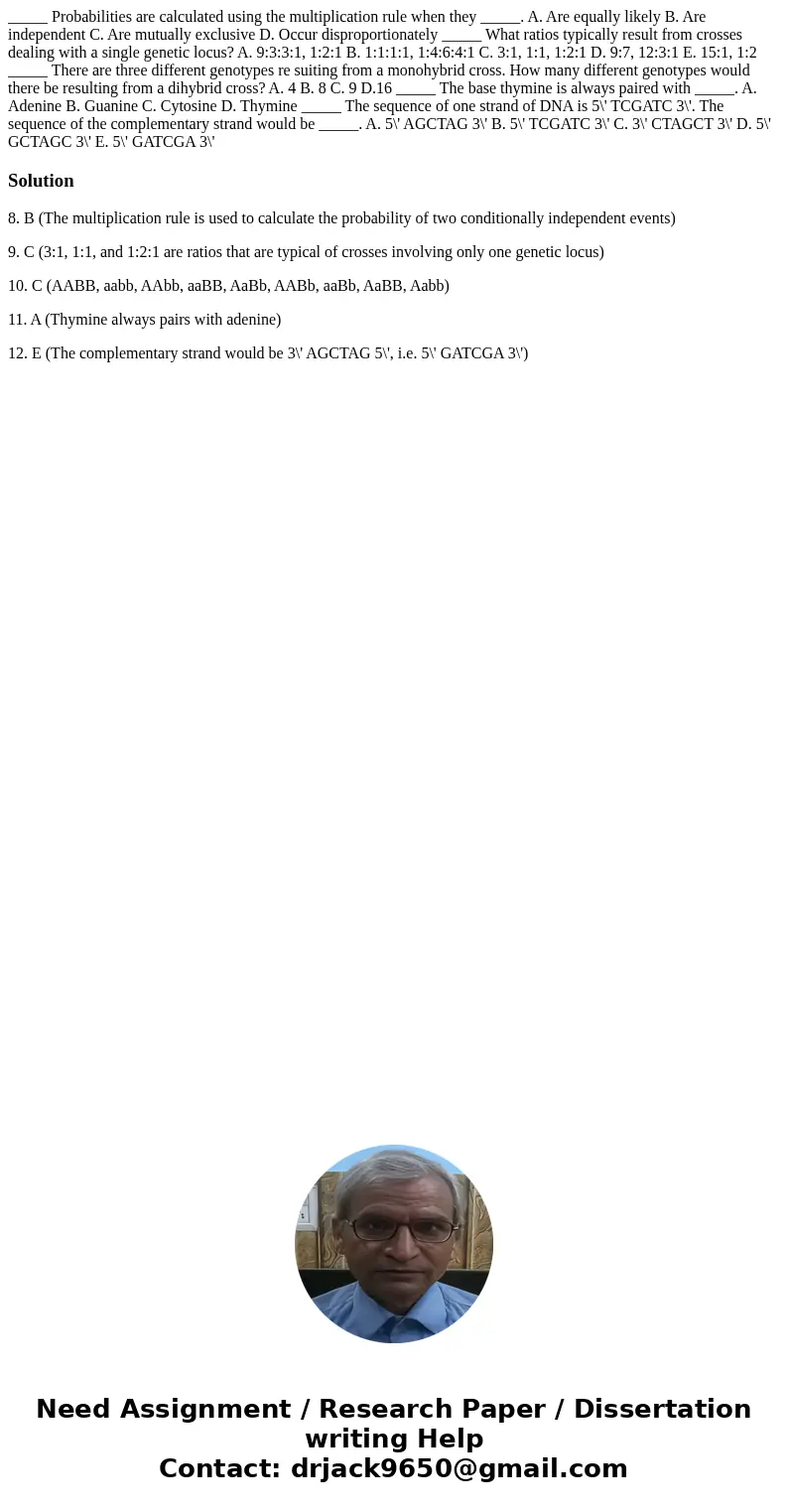Probabilities are calculated using the multiplication rule
_____ Probabilities are calculated using the multiplication rule when they _____. A. Are equally likely B. Are independent C. Are mutually exclusive D. Occur disproportionately _____ What ratios typically result from crosses dealing with a single genetic locus? A. 9:3:3:1, 1:2:1 B. 1:1:1:1, 1:4:6:4:1 C. 3:1, 1:1, 1:2:1 D. 9:7, 12:3:1 E. 15:1, 1:2 _____ There are three different genotypes re suiting from a monohybrid cross. How many different genotypes would there be resulting from a dihybrid cross? A. 4 B. 8 C. 9 D.16 _____ The base thymine is always paired with _____. A. Adenine B. Guanine C. Cytosine D. Thymine _____ The sequence of one strand of DNA is 5\' TCGATC 3\'. The sequence of the complementary strand would be _____. A. 5\' AGCTAG 3\' B. 5\' TCGATC 3\' C. 3\' CTAGCT 3\' D. 5\' GCTAGC 3\' E. 5\' GATCGA 3\'
Solution
8. B (The multiplication rule is used to calculate the probability of two conditionally independent events)
9. C (3:1, 1:1, and 1:2:1 are ratios that are typical of crosses involving only one genetic locus)
10. C (AABB, aabb, AAbb, aaBB, AaBb, AABb, aaBb, AaBB, Aabb)
11. A (Thymine always pairs with adenine)
12. E (The complementary strand would be 3\' AGCTAG 5\', i.e. 5\' GATCGA 3\')

 Homework Sourse
Homework Sourse